How to engineer a smarter drive selection process for motorized equipment
Key highlights
- When selecting a motor drive, prioritize five key attributes: application requirements, operating environment, safety features, control interfaces and communication protocols.
- For motors under 70 hp, focus on a drive's price, reliability, integration with your PLC platform and the ease of training for maintenance personnel, as these drives are often treated as black-box replacements.
- To streamline maintenance and reduce network traffic, store only essential drive parameters, such as basic motor configuration, control commands and health status, in the PLC, rather than attempting to manage all available parameters.
In a world of black-box maintenance and increased prices, where time is precious, how do you know what kind of drive to choose for your application? Choices and brands are abundant, but choosing a drive can be difficult or confusing.
Let’s narrow down some options, as far as general specifications, and not worry about brand for a moment. In doing so, keep in mind that drives supporting 70-hp motors and below are probably going to be direct replacements or black-box maintenance where a tech replaces the whole drive and sends it off for exchange, instead of putting it on the bench or fixing it in place.
For the sake of simplicity, let’s consider drives supporting motors under 70 hp and simple inductive ac motors. Things to keep in mind:
1. Application requirements: How do you want to control the function of the motor? Speed, torque, precision? It’s good to know what you are moving, how fast and to what degree of error you may have.
2. Environment: Is the environment harsh, wet, oily, dry, hot? Ruggedized electronics will be needed in specific cases.
3. Safety: What features do you want the safety to have? Safe torque off is a go to for most environments and applications.
4. Control: How many inputs can the drive take? Is there an option to program the inputs without a programmable logic controller (PLC)? How does the PLC need to interface? Do you need to buy software to program the drive, or can you do so from the PLC, or is there an interface?
5. Communication: It’s imperative to get a drive that fits the communication architecture and that can provide feedback for control. This means, adaptations, such as Ethernet, Profinet, Modbus, EtherCAT.
Those are the five questions or attributes that must be answered when specifying a drive. On top of that, it is important to understand reliability and maintenance support, if not for commissioning, then after it’s on the customer site and the customer wants to maintain it without a hefty call-out fee. This includes considering brand reputation, technical support, warranty and service.
When purchasing, it’s good to understand the availability, lead times and the cost of ownership. Many maintenance departments want to standardize on a brand due to company preference and engineer/technician comfort. Familiarity sells. There can be a dependence on who the plant sees the most often, as far as field support. Industries also have their favorites based on the history of what automation brand supported that industry from its inception.
Most of the drives supporting the lower hp market are going to be similar. Things to consider at that point are price, integrability with the PLC platform, reliability and trainability.
Keep in mind also that, just because one may grab the 1,000 parameters on a drive from the Ethernet, it does not mean that you should. Basic motor parameters may be stored and loaded from the PLC. This includes motor voltage, motor current, motor frequency, motor speed, motor power or kilowatt rating and motor type.
Control parameters can be tabled with acceleration time, deceleration time, minimum and maximum speed boundaries in revolutions, Hertz or some unit derived thereof, stop/start mode and control mode.
Get your subscription to Control Design’s daily newsletter.
Input and output parameters are discrete for start, stop, forward, reverse, analog for speed reference and torque feedback. Relay outputs may have status signals like running or drive fault. Analog outputs would include current and speed feedback to validate that the drive spun up to the command given.
Communication settings might be monitored for the purpose of validating that the drive is on the network. The PLC should throw an alarm if it does not see the hardware. Network addresses could be assigned at the switch or in the PLC to allow for hot swaps without having to program the address. Protocol selection is a parameter that is important.
Overload and protection settings may be monitored by the PLC and human-machine interface (HMI) for the purpose of drive health. This would include overcurrent, temperatures and overspeed, with voltage and frequency limits.
Specialized feedback may be required for tuning or proportional–integral–derivative (PID) settings. This includes auto-tune capacity and torque boost. Specialized parameters would depend on the application and would be subject to maintenance accessibility. Sometimes customers want these on the HMI display.
Keeping a table of parameters for each drive and knowing where the drive stores them will allow for reading and writing parameters in specific modes or when a status changes so that traffic from drives may be limited. Better yet, if drives are put on their own subnet, then drive traffic can be isolated from process and not cause other issues. In conclusion, it is important to understand that drive parameters may be tabulated and kept specifically for ease of changing out the drives and that storing every drive parameter should not be necessary.
Basic motor configuration and drive parameters for process feedback and commands, as well as drive health and communication settings are critical for maintaining a drive system. This is a basic overview of drive parameters, and they should be found on any of the major brands. If an engineer considers the application, environment, safety, control and communication setup of the controls network, then choosing a drive for a system will be easier.
About the Author
Tobey Strauch
Arconic Davenport
Tobey Strauch is currently managing brownfield installations for controls upgrades at Arconic Davenport. She has previously worked as principal controls engineer and before getting her bachelor’s in electrical engineering, was a telecommunications network technician. She has 20 plus years in automation and controls. She has commissioned systems, programmed PLCs and robots, and SCADAs, as well as managed maintenance crews. She has a broad mix of mechatronics with process control. She enjoys solving problems with Matlab and Simscape. Contact her at [email protected].


